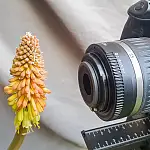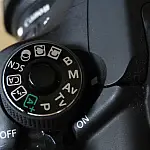Building DIY Camera Shutter Release for Long ExposuresWhen taking long exposures, such as during astrophotography, it is necessary to release the shutter without actually touching the camera. Touching the camera introduces vibrations which blur the image.
There are three options available for taking long exposures without touching the camera to release the shutter. Use the onboard timer, a 10-second countdown, or use a cable release. My Canon has a cable socket, so I looked around for one on the internet and low and behold there were lots, ranging in price from £15 to £60 (for what I assume to be a switch on a plug!).
Since I am broke, I decided that I would try and build a DIY camera shutter release out of parts I had lying around at home. How hard can it be? I was pretty impressed with the results, so I thought I'd share this idea as a photography diy shutter release guide.
The first thing I needed to find out was the connector which is used for the shutter release and plugs into the camera. After a little digging around in the old cable box, I found a mini jack plug with three connections. The cable is actually from an old VCR infrared control and for the Canon, its 2.5mm jack will be perfect.
This should work with any Canon 300/350d (Digital Rebel/Kiss), but the technique can be used for any camera with a remote-release socket. You will need to look for the pin descriptions for your camera and wire accordingly.
DIY Camera Shutter Release Parts List
These are the parts that I used to create my shutter release cable.
Canon RS60-E3 Shutter Release Pinout
There are three connections for the Canon RS60-E3 basic shutter release. Like the camera shutter button, you press halfway to focus and fully to take the picture. This is achieved by bridging the connections.
- Bridge Ground and Focus - Camera Autofocus
- Bridge Ground and Shutter - Takes Picture
Since I will be using the cable when the camera body is attached to the telescope, there will be no lens to focus on, so I am only interested in releasing the shutter, so a simple switch connected to 1 and 3 will do the job nicely.
When you build your camera interface, you can split the auto-focus and shutter release functions by using two switches or use two independent circuits.
DIY Camera Shutter Release Construction
Once I had snipped the Mac connector off the donor cable, I used a circuit tester to check which of the four wires goes to the correct pins. In this example, I will be using the Black and the Red cable. Colours will, of course, be entirely different in any other cable so make sure you find the correct ones. I used a pair of snips to trim the rest back and sealed them in with a glue gun.
Now carefully solder the two wires to the correct terminals on the micro switch, again use a circuit tester to make sure that it is functioning correctly.
I know my soldering isn't the best in the world, but it works ;)
I have already opened up the IR control and removed the LED from inside. I used some general-purpose contact adhesive to stick the switch to the base, making sure that I had aligned the switch with the hole in the top. Let the glue set for a while before proceeding.
When the cover is reattached, the switch is visible through the hole below. All that is needed now is a button to press, and that came from an old remote control unit that I never used.
Open up the remote, remove the rubber buttons and cut one out!


















